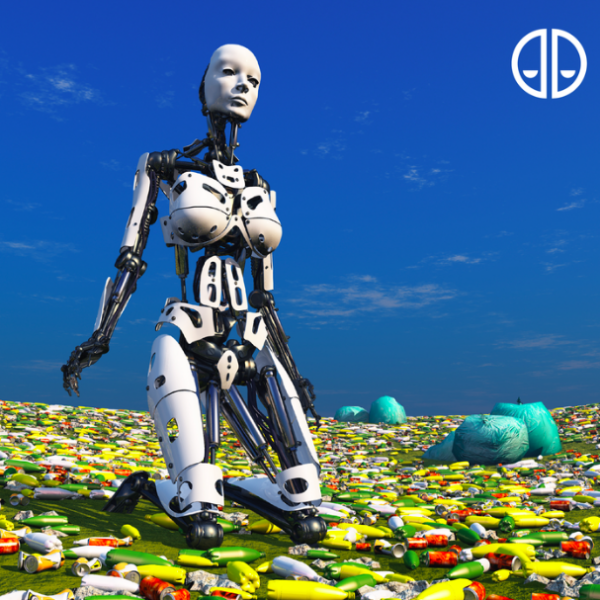The film industry has continually pushed the boundaries of technology, from CGI advancements to motion capture. The latest frontier in this quest for innovation is digital de-aging, a technique that’s both fascinating and controversial. This technique is prominently featured in Robert Zemeckis’ new film Here, starring Tom Hanks and Robin Wright. In this article, we will explore the details of Here, the use of de-aging technology, and the broader implications for the film industry.

The Film Here
Plot Overview
The movie is inspired by a novel by Richard McGuire first released in 2014. It tells the story that takes place in one room across centuries showcasing the lives of different people living there in various time periods. The film adaptation faithfully follows this storytelling approach delving into human emotions like happiness, love, sorrow and sadness.
Tom Hanks and Robin Wright, known for their roles in the movie Forrest Gump come together again in a film directed by Robert Zemeckis. Their reunion adds a touch of nostalgia, to the movie complemented by the use of digital technology to depict the characters at different stages of their lives.
The Cast and Crew
The movie features a lineup of actors such as Paul Bettany, Kelly Reilly, Michelle Dockery, Nikki Amuka Bird and David Fynn. The script, co authored by Eric Roth and Zemeckis seeks to convey the heartfelt story from the original comic book. Alan Silvestri, a collaborator with Zemeckis composes the music score bringing an additional sense of connection and richness, to the production.
Technological Innovations: De-Aging in Here
The standout feature of Here is its use of digital de-aging technology. This technique allows actors to appear significantly younger than their actual age, a tool that has been increasingly utilized in Hollywood. In Here, the technology is employed to present Tom Hanks and Robin Wright as their younger selves, spanning multiple decades.
The De-Aging Process
What is De-Aging Technology?
De-aging technology involves the use of advanced computer graphics and artificial intelligence to modify an actor’s appearance, making them look younger. This is achieved through various methods, including the use of CGI, facial mapping, and motion capture. For Here, the production team used a generative AI-assisted technology called Metaphysic Live, which allowed for real-time face-swapping and digital de-aging.
Historical Context and Evolution
The idea of de-aging is not completely novel. It has been developing over the few decades with initial instances seen in movies such as The Curious Case of Benjamin Button and Tron; Legacy. Nevertheless the technology has progressed considerably becoming more refined and lifelike. In times movies like The Irishman and Captain Marvel have demonstrated the capabilities of de-aging technology, in realistically depicting characters at various stages of life.
Impact on Here
For Here, the de-aging technology is not just a gimmick but a crucial element of the storytelling. The film spans several generations, and the ability to present the same actors across these timelines enhances the continuity and emotional depth of the narrative. Tom Hanks and Robin Wright can seamlessly transition between different periods in their characters’ lives, making the audience’s connection to the story more intimate and immersive.
Challenges and Controversies
Technical Challenges
Despite its impressive capabilities, de-aging technology comes with significant challenges. The process is complex and resource-intensive, requiring meticulous attention to detail to ensure that the de-aged characters look realistic and maintain the actors’ original expressions and performances. Achieving this level of detail requires a combination of advanced software, skilled technicians, and extensive post-production work.
Ethical Considerations
The use of de-aging technology also raises ethical questions. Critics argue that it can perpetuate unrealistic beauty standards and contribute to ageism in Hollywood. By continually presenting younger versions of actors, there is a risk of devaluing older performers and reinforcing the notion that youth is more desirable. Additionally, there are concerns about consent and the potential for this technology to be used without the actors’ approval in the future.
Viewer Reception
Another aspect to consider is the audience’s reception of de-aged characters. While some viewers appreciate the seamless transitions and the ability to see their favorite actors in roles spanning multiple generations, others find the effect unsettling and distracting. The “uncanny valley” effect, where digitally altered faces appear almost but not quite lifelike, can sometimes create a sense of discomfort among viewers.
Potential Uses
If de-aging technology is successfully integrated into Here it could have applications in the film industry. Apart from rejuvenating actors’ younger selves this innovation could bring back performers for new roles or even introduce completely digital actors. This not only offers new avenues for storytelling but also poses various ethical and creative dilemmas.
Reviving Legendary Characters
An aspect of de-aging tech is its potential to resurrect iconic characters. Picture Humphrey Bogart reprising his role as Rick Blaine in a Casablanca sequel or James Dean starring in a new movie long after his tragic passing. While this ability pays tribute to these stars’ legacies it also serves as a link between modern cinema. However it must be approached cautiously to ensure the original performances are respected.
Crafting Actors
Another frontier lies in crafting entirely digital actors. These virtual performers could embody characteristics or even blend traits from different actors. While this sparks creativity it also raises concerns. The use of actors may limit opportunities for human performers and potentially standardize performances, across the board.
Furthermore there is a lingering question about whether audiences can connect with fully digital characters as reported by TheWrap and ABC Audio.
Expanding the Boundaries of Storytelling
Additionally the use of aging technology has the potential to broaden storytelling horizons by enabling more intricate narratives that unfold over extensive timeframes. This advancement could particularly benefit genres such as epics, biopics and science fiction films allowing filmmakers to portray characters’ entire life stories using a single actor. This continuity has the capacity to deepen audience involvement and create a more unified viewing experience as highlighted by ABC Audio.
Impact on the Industry
The integration of aging technology is poised to have far reaching implications across various facets of filmmaking influencing everything from casting choices to production budgets. With advancements making this technology more accessible and cost effective it may become a tool in the industry akin to CGI and green screen techniques. However filmmakers will need to navigate using these tools while maintaining performances and relatable characters according to TheWrap and ABC Audio.
Changing Casting Norms
Moreover de aging technology stands to transform casting dynamics significantly. Actors might no longer be limited by age stereotypes when taking on roles giving them the opportunity to explore a range of characters. This flexibility could be advantageous, for actors seeking to embody younger personas without being bound by their actual age.
On the side it could restrict opportunities for young actors who typically fill these roles. Finding a balance between leveraging established star power and giving chances to talent is crucial as highlighted by TheWrap.
Impact on Production Budgets
Regarding its impact on production budgets the initial costs of aging technology can be high due to investments in software, hardware and skilled personnel. However as the technology advances and becomes more efficient expenses are anticipated to decrease. This cost reduction could make de-aging feasible for mid budget films making its use more widespread in the industry. Producers will need to consider these costs against potential box office earnings and its value in enhancing storytelling as mentioned by ABC Audio.

Legal and Ethical Standards
The increasing use of aging technology raises concerns about legal and ethical standards that need to be established. Issues like actor consent, realistic age representation and the utilization of actors likenesses must be regulated closely. Industry organizations, unions and regulatory bodies will have a role in developing guidelines to ensure fair practices. These standards are essential for preserving performance integrity and safeguarding actors rights.
Audience Adaptation
The ultimate success of de aging technology hinges on audience reception and acceptance.
Viewers are getting used to seeing enhanced faces, which might make them more accepting of slight flaws and the eerie feeling when things look almost real. Filmmakers need to strike a mix of using technology and keeping performances authentic to keep the audience interested and emotionally invested in the story.








